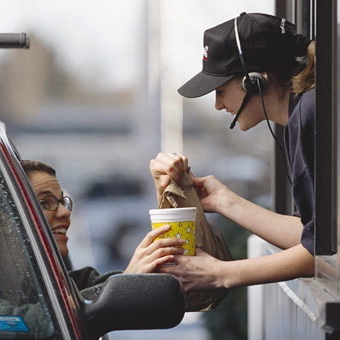Super Bowl Brands: Budweiser

......................................................................................................................................................................
Company: Anheuser-Busch (Budweiser)
Name: In 1876, Carl Conrad and Adolphus Busch decided to call their new bohemian-style beer Budweiser, which is German for “from Budweis,” a city with a tradition of brewing beer since 1265. Although the US trademark was acquired in 1878, the name proved difficult to protect, as several ‘budweiser’ style beers existed at the time. By 1894, trademark suits were already roiling the courts. Globally, the existence of a Czech Budweiser prevented the name from becoming an international brand. Even today, the name Budweiser can only be used in 16 of 35 European countries. In others, it has to be marketed as Bud or Anheuser-Busch Bud.
Career Highlights: Probably the most iconic of all the Super Bowl brands, Budweiser and Bud Light consistently have some of the funniest and most liked spots. Memorable Super Bowl campaigns include The Bud Bowl in 1989, the Budweiser Frogs in 1995, and last year’s rocky-inspired Dalmatian and Clydesdale ad, which took top honors in most polls.
Read more
Fast Food Fads

......................................................................................................................................................................
I am going to go head and admit to the world that I eat fast food on a regular basis. My meals quite frequently consist of the following keywords: Double cheese, Nuggets, Soft taco, Crispy Chicken, and 6 inch turkey on wheat (when I’m feeling conservative). I’ve brought a salad to work for lunch. But make no mistake; the salad is just a façade. A feeble attempt to fit in with some of my health conscious colleagues. But I am not ashamed anymore. I love processed foods, ketchup, and sesame seed buns.
I consider myself to be somewhat of a connoisseur to the fast food/delivery food industry. I’ve witnessed several trends that have swept across my favorite fast food brands.
Read more
Can a tea brand ‘end bitterness?’

......................................................................................................................................................................
I grew up drinking Luzianne tea on my front porch. We served it at every family picnic and it was a staple within our refrigerator. The Luzianne brand epitomized “sweet tea,” and was considered the standard southern beverage.
The company’s recent new product line is “Luzianne Coffee,” with a clever campaign to “end bitterness.” While I love the call to action of the new initiative, will this simple brand extension dilute the equity they have in their famous tea brand? With Luzianne’s heritage as a cool, refreshing, afternoon front porch beverage, will it be difficult for the company to successfully cross over into the hot, wake-you-up in the morning coffee space?
Campus Equity

......................................................................................................................................................................
As a North Carolina native, I’ve always considered the University of North Carolina at Chapel Hill to be synonymous with “UNC.” It was the first public university in the United States, and the only one to graduate students in the eighteenth century. The institution itself owns the trademark for UNC, as well as the domain name.
The University of North Carolina family of schools actually has 16 different university campuses, most with disparate brands. Some institutions utilize a brand extension approach to identify themselves as part of the University of North Carolina family, including Asheville (UNCA), Charlotte (UNCC), Greensboro (UNCG), Pembroke (UNCP), and Wilmington (UNCW). But with other constituents of the University of North Carolina family adopting a different style of naming (Appalachian State, NC State, East Carolina, etc), it looks like the system needs some consistent brand standards. Does the brand extension approach for some universities imply that they are simply an additional campus of the main school and not their own entity? And do those universities that distance themselves in naming structure from the UNC family heritage do a disservice to their students and alumni?
Read more
Redefining High Definition
Laminate countertops have long been recognized for their scratch-resistance, long wear time, and easiness to clean and maintain. The product is an economical choice for homeowners, but the accessibility and appeal of granite and quartz for use in kitchens and bathrooms recently has given laminate manufacturers cause for redesign and rebranding.
Wilsonart’s new “high definition” countertops are, in fact, laminate. They incorporate new textures and finishes that rival the look of granite, without the price tag. And they offer builders an option for new home buyers to upgrade their kitchen without adding a hefty line item to their sales sheet. Wilson could have called this new line “Laminate Plus” or “Laminex” or “Insert nifty new name here.” Instead, the 50+ year old company borrowed some equity from the well-known and continually growing audio/video industry and simply dubbed their product line “Wilsonart High Definition.”
Read more
Celebrity Branding
The Olympics may be over, but the excitement is just beginning for the world of swimming. Thanks to world record-shattering performances in the pool, the Michael Phelps name is poised to become one of the most powerful brands in sports. Some say his equity is already strong enough to launch an entire company.
A big name can do a lot, giving personality and shape to an otherwise amorphous brand. Nike, who successfully partnered with Michael Jordan as both an endorser and eventually the namesake of the Air Jordan product line, has proven time and time again that brands can inherit the positive attributes of their spokespeople.
